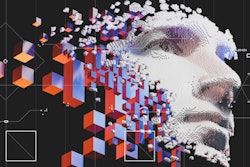
Enterprise artificial intelligence (AI) has shown tremendous promise in the field of radiology, specifically around assistive intelligence. Given the pace of technological change in some parts of our lives, it's a reasonable question to ask how far we can or should go.
 Jeff Sorenson.
Jeff Sorenson.In medicine, we commit to improving a patient's health and doing no harm in the process. Perhaps this should be our guide in our AI pursuits as well. Patients will only ever receive the benefits of AI if we start adopting it responsibly.
There are two key aspects of healthcare AI development that we need to keep in view:
- Humans simply can't process the full amount of data coming into health systems.
- AI will only evolve if medical professionals can use an initial version of it and feel empowered to go further. Only then will the world be able to see what AI can really do.
Hospitals are not car factories, where a robot replaces a human installing windshields and serves an identical function. While patients in states of vulnerable health may be open to accepting help from any source, whether it's an algorithm, a person, or a robot, only proven and effective treatments should be offered.
This is where AI software performing clinical decision support has a more difficult road to adoption than industrial forms of AI -- people need to see that it is working to believe in its value.
The power of enterprise AI is not replicating what humans can do, it's about delivering real-time insights that help humans move faster and with more confidence. When AI becomes part of the human workflow, that's when learning happens -- for man and machine, together.
Taking the example of radiology, even the most efficient radiologist doesn't have time to manually measure and track the size of everything important in every image. To move faster, radiologists assess visually and report on what's relevant to the clinical question of today. This leaves a lot on the table in terms of valuable information that could impact patient care tomorrow.
Realistically, radiologists can only take a few measurements or note critical perceived changes. Compare that with powerful algorithms that can do the measuring and track changes precisely across the thousands of images that make up a single study. Then think about the fact that there are tens of studies per patient and hundreds of thousands of other patients with similar conditions. With more than 6,000 patients per radiologist in the U.S., enterprise AI solutions are needed to empower radiologists to accelerate their work while maintaining accuracy.
The clinical value of taking these additional measurements over time is crucial for patient care because so much is determined by the progression of diseases. In addition, AI can use its clinical detection capabilities to be the first to point out the problem or symptom, which can greatly accelerate the time it takes for patients to receive treatment.
Recently, Medicare provided a first-of-kind additional reimbursement for using AI to identify which stroke patients presenting to the emergency department had a severe blockage in their arteries. National healthcare authorities recognized the capability of this AI technology to accelerate the care that patients received and its measurable positive impact on patient outcomes.
Enterprise AI is also showing its value outside of imaging by identifying early signs of malnutrition, kidney disease, and other life-threatening illnesses. Pioneering hospitals are looking at using platforms to ingest data from disparate sources such as payor, provider, pharma, and population groups. The ingested data can be transformed into useful population health and value-based care insights.
But now is not the time to focus on "what" enterprise AI can accomplish for healthcare. We already know the possibilities are limitless. We need to focus on "how" first and prioritize high-impact solutions that are actionable today.
Over and above anything else, those of us on the tech side of health care have to prove that AI works -- and provide a prescription (best practices) for hospitals to lead their own AI adoption. Right now, putting AI into the workflow and growing utilization is of primary importance.
For years we have been talking about the possibilities of AI in healthcare, often with the assumption that breakthroughs will come from big tech (despite a number of high-profile flops in the field). Don't be surprised if the major innovators are small to medium-sized companies with deep domain expertise working closest to the action at the clinical level.
For many physicians, the main hurdle to AI adoption is really getting experience with the technology while minimizing risk and distraction. Many are afraid to try without knowing that it's not going to interfere with their clinical routine. It's a quandary that can only be resolved with thoughtful, targeted AI that builds trust. Trust leads to utilization, which will unleash AI's true potential.
Jeff Sorenson serves on the board of directors of TeraRecon, an enterprise AI company for medical imaging for which he also served as president and CEO. He is a member of the board of advisors for SymphonyAI, an operating company focused on enterprise AI across multiple industries. Prior to TeraRecon, he held leadership positions at Hyland Software, GE, Imatron, and Philips. He earned a Bachelor of Science in Electrical Engineering from the University of Wisconsin and an M.B.A. from Cardinal Stritch University in Minnesota.
The comments and observations expressed are those of the author and do not necessarily reflect the opinions of AuntMinnie.com.



















